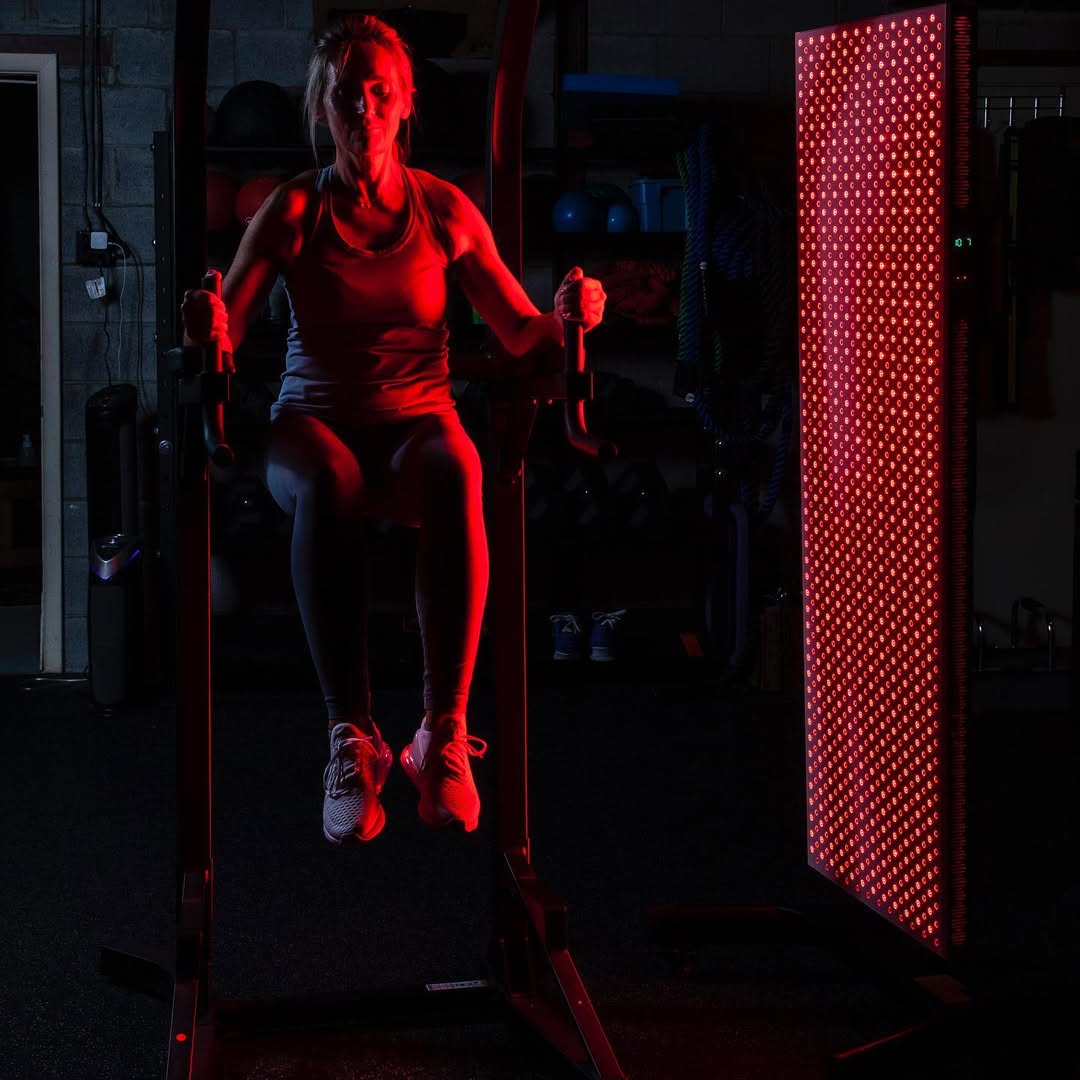![]() Free Shipping
Free Shipping ![]() Buy Now, Pay Later
Buy Now, Pay Later ![]() Eligible
Eligible
Discovering Red Light Therapy Benefits for Clogged Arteries and Cholesterol

Introduction
Cardiovascular disease remains one of the leading causes of death worldwide, with clogged arteries and high cholesterol playing a significant role in its development. Traditional treatments include medications like statins, lifestyle changes, and in severe cases, surgical interventions. However, emerging research suggests that red light therapy (RLT), also known as photobiomodulation, may offer a non-invasive, drug-free approach to improving arterial health and cholesterol levels.
This article explores the science behind red light therapy, its potential benefits for unclogging arteries, reducing cholesterol, and improving overall cardiovascular function.
Understanding Clogged Arteries and Cholesterol
Before diving into red light therapy, it’s essential to understand the mechanisms behind clogged arteries and high cholesterol.
1. What Causes Clogged Arteries?
Clogged arteries, or atherosclerosis, occur when plaque (composed of fat, cholesterol, calcium, and other substances) builds up inside the arterial walls. Over time, this narrows the arteries, restricting blood flow and increasing the risk of:
- Heart attacks
- Strokes
- Peripheral artery disease (PAD)
2. The Role of Cholesterol
Cholesterol is a waxy substance produced by the liver and obtained through diet. There are two main types:
- LDL (Low-Density Lipoprotein): “Bad” cholesterol that contributes to plaque buildup.
- HDL (High-Density Lipoprotein): “Good” cholesterol that helps remove LDL from the bloodstream.
High LDL levels, inflammation, and oxidative stress are key contributors to arterial blockages.
What Is Red Light Therapy?
Red light therapy (RLT) is a form of low-level laser therapy (LLLT) that uses specific wavelengths of red and near-infrared (NIR) light to penetrate the skin and stimulate cellular repair.
How Does It Work?
- Wavelengths (630nm–850nm): These wavelengths penetrate deep into tissues, reaching muscles, blood vessels, and even bones.
- Cellular Energy Boost: Light photons are absorbed by mitochondria, enhancing ATP (adenosine triphosphate) production, which fuels cellular repair and regeneration.
- Anti-Inflammatory Effects: RLT reduces inflammation, a key factor in atherosclerosis.
- Improved Circulation: It stimulates nitric oxide (NO) release, which helps dilate blood vessels and improve blood flow.
VELLGUS Elite V2
THE #1 RATED RED LIGHT DEVICE
VELLGUS pro V2
THE #1 RATED FULL BODY RED LIGHT DEVICE
Red Light Therapy Benefits for Clogged Arteries and Cholesterol
1. Reduces Inflammation in Blood Vessels
Chronic inflammation is a major driver of atherosclerosis. Studies show that RLT:
- Decreases pro-inflammatory cytokines (like TNF-α and IL-6).
- Increases anti-inflammatory markers (such as IL-10).
- Helps prevent endothelial dysfunction, a precursor to plaque formation.
2. Enhances Nitric Oxide Production
Nitric oxide (NO) is crucial for vasodilation (widening of blood vessels). RLT has been shown to:
- Boost NO release, improving blood flow.
- Reduce arterial stiffness, a common issue in hypertension and atherosclerosis.
3. Lowers LDL and Improves HDL Cholesterol
Preliminary research suggests RLT may positively influence lipid metabolism:
- A 2017 study in Lasers in Medical Science found that RLT reduced total cholesterol and LDL levels in animal models.
- Another study indicated improved HDL function, helping remove excess cholesterol from arteries.
4. Promotes Endothelial Repair
The endothelium (inner lining of blood vessels) is critical for vascular health. RLT:
- Stimulates endothelial cell regeneration.
- Reduces oxidative stress, preventing further damage.
5. Supports Weight Management (Indirectly Improving Cholesterol)
Obesity is linked to high cholesterol. RLT may aid in:
- Fat metabolism (breaking down fat cells).
- Improving insulin sensitivity, reducing metabolic syndrome risks.
Scientific Evidence Supporting RLT for Cardiovascular Health
While more human trials are needed, several studies highlight RLT’s potential:
1. Animal Studies on Atherosclerosis
- A 2019 study in Journal of Photochemistry and Photobiology found that NIR light reduced plaque buildup in mice by enhancing cellular repair mechanisms.
2. Human Studies on Circulation
- A 2020 clinical trial published in Photomedicine and Laser Surgery showed that RLT improved microcirculation in patients with poor blood flow.
3. Research on Cholesterol Levels
- A 2021 study in Lasers in Medical Science reported significant reductions in LDL and triglycerides after RLT treatment in diabetic patients.
How to Use Red Light Therapy for Heart Health
1. Choosing the Right Device
- Wavelength: Opt for devices emitting 630nm–850nm (red and NIR).
- Power Density: At least 50–100 mW/cm² for deep tissue penetration.
- FDA-Cleared Devices: Ensure safety and efficacy.
2. Treatment Protocol
- Frequency: 3–5 sessions per week.
- Duration: 10–20 minutes per session.
- Target Areas: Chest (over the heart), neck (carotid arteries), and major blood vessels.
3. Combining RLT with Lifestyle Changes
For best results, pair RLT with:
- Heart-healthy diet (Mediterranean diet, low in trans fats).
- Regular exercise (aerobic and resistance training).
- Stress management (meditation, deep breathing).
Potential Side Effects and Safety
RLT is generally safe, but precautions include:
- Avoiding eye exposure (use protective goggles).
- Not overusing (stick to recommended durations).
- Consulting a doctor if on photosensitizing medications.
Conclusion: Is Red Light Therapy the Future of Heart Health?
While red light therapy is not a replacement for conventional treatments, it offers a promising, non-invasive adjunct therapy for improving arterial health, reducing cholesterol, and enhancing circulation. As research continues, RLT could become a mainstream tool in preventing and managing cardiovascular disease.
Would you try red light therapy for heart health? Share your thoughts in the comments!








